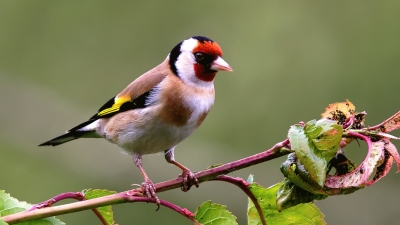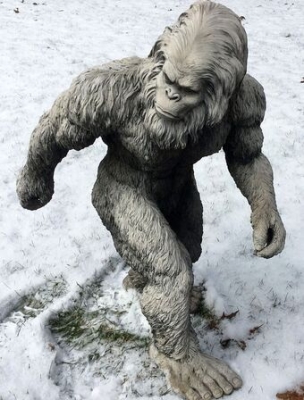
From the dictionary
First, let’s go through the Macmillan dictionary.
[1]. fledged: (of a young bird) having wing feathers that are large enough for flight; able to fly. As in “a recently fledged bird.”
[2] flightless: a bird that cannot fly even though it has wings.
[3] great: “Great” has its own meaning in bird vocabulary. It is used in the names of birds or animals that are Larger than related, birds or animals. As in the “Great horned owl.”
[4] gregarious: gregarious animals or birds Live in groups
[5] Lesser: it is used in the names of some animals, birds, or plants to show that they are a smaller type. As in the “lesser egret.”
[6]migratory: a migratory bird or animal is one that migrates – moves to another place for warmth, food and,
shelter during certain months.
[7] webbed: if a bird or animal has webbed feet, it has skin between its toes to help it to swim well. Or web-footed: with toes that are joined by a piece of skin. As in the “web-footed-frog .”
[8] common: it is used in the names of birds and animals when there are more of them than related birds and animals.
Now let’s see how birds are often described.
young, wild, migratory, sea, white, smaller, aquatic, rare, black, native, mate, tropical, exotic, stuffed., larger, insectivorous, older, immature, tiny, flightless, predatory, blue, coloured, domestic, marine, caged, game, canary, winged, nesting, migrant, adult, sub-adult, coloured, nocturnal., brown, yellow, captive, humming, giant, happy, hungry, shore, sick
The flight of birds
Writer Liam O Flynn lists these steps for describing the flight of bids. He tells you how each bird has its unique method of flying and therefore needs a different set of words to describe it. “If you need to describe the flight of birds, it is best to divide them into separate categories of motion. For example, an eagle has a different flight pattern to a swallow.” He says there are over 58,000 words to help you, with your descriptive and divides birds into 7 different types based, on their movement.
Eagle: He was gliding through the air. He was soaring far above vs. He was sailing through the air.
Blackbird: He raced away from me. His wings were whirring at a furious rate. His wings were a flurry of motion.
Swallow: He was cutting through the air. He was flitting through the air’. He was skimming through the air. Peregrine falcon: He swooped down on his victim. He plunged towards the ground. He dive-bombed his prey from a great height. Kestrel:He was hanging in the air. He was hovering in the air. (Gerard Manley Hopkins named him the windhover). He was loitering the air and scanning the ground below.
Vulture: He was circling in the car. He was drifting in the car. He was climbing the thermals and going out of sight.
Seagull: He was lazing in the car. He was swimming through the car. He was cruising through the air.
A narrator’s thoughts
The seaside provides us with multi-sensory nourishment. But first you have to get past the seagulls. Such inelegant birds who haven’t had their train of thought broken by these pirates of the sky? You are just about to describe the smells from the far away villas when what was that? Was that actually the sound of squawking and quarrelling on this most blissful of mornings?
Then they ghost into view. They use the sun to hide their approach, but the noise they make is unmistakable. First one, then two, then a whole multitude of the troublemakers. They are after the breakfast roll you dutch tighter in your hand and you are up against it as these are a determined enemy. They sail and glide towards you, first, using the sun as a shield, and approaching in silent mode for the attack. The first one that you can make out properly is googling you with his cannibal’s eye, searching for your weaknesses. When he has established that you are [a victim], he makes his move. Tucking his wines in to himself, he swoops towards you like an avenging angel of death.
As you are bracing yourself his attack, the rest of the mob have circled in behind you and one of them has peaked at your hand trying to dislodge the roll.. Instinct has made you swipe at him and the blow lands on his soft body, scattering the rest and, throwing feathers into the car. He screams at you now, beating his wings furiously a few feet above your head. Pirate one has used this distraction to dive bomb your head and you feel the sharp end of one of his claws on your scalp. You now have an angry horde of seagulls flapping, whirling, swooping and plunging above your head. You are leaping up and down, with a large bacon, and sausage roll in your hand, and screaming vile curses at some birds. You put the roll inside your shirt. It is becoming a symbol of your resolve.
They increase the ferocity of their attack. They scream and circle, screech and plummet, all the while with wings a-flurry probing for weakness. Their beaks are sharp, their claws rip at you. They come at you from every angle, jabbing at your head and with their wings beating the air. They arrow down towards you in an unending wave of brazen attacks. You concede defeat. You sink to your knees and reach for the roll. You can smell the delicious waft of mustard and ketchup inside it as you throw it violently into the air. It never reaches the ground because these vampires of the beach are attacking it in a frenzy of barbarian proportions.
Picture Credit : Google







